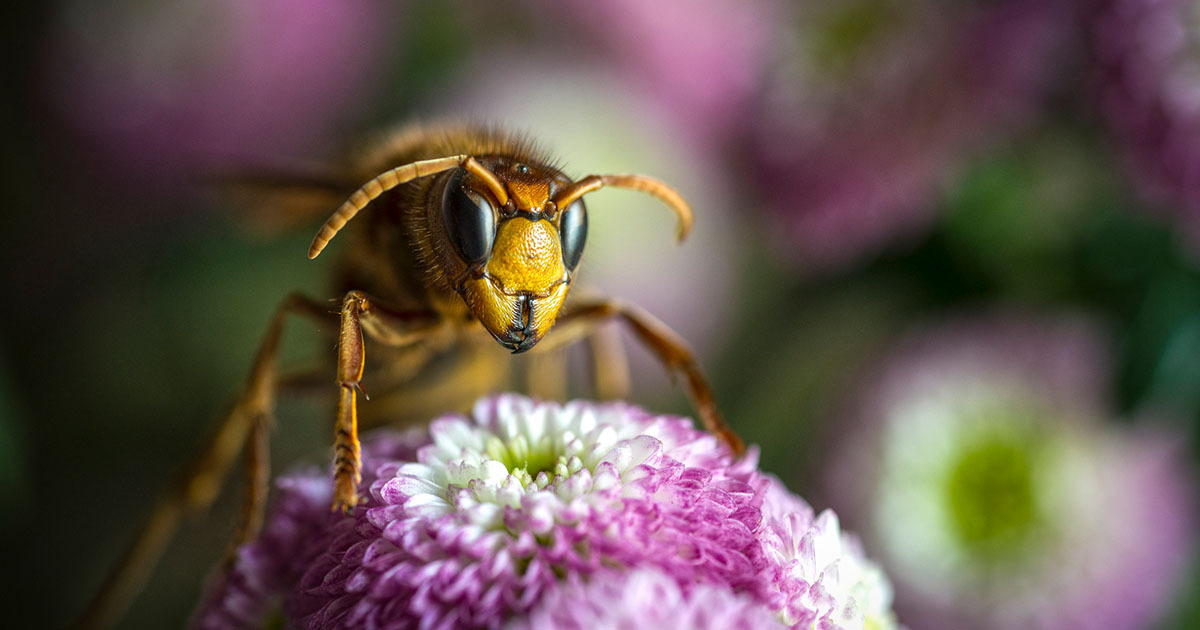
A buzzing in your soda can. A low hum coming from the flowerbed.
These sounds of summer set the perfect ambiance for a mid-afternoon snooze in the backyard hammock. And just like their role in this summertime scene, the environmental role that bees play is essential.
Zipping from one daisy to the next, bees are not just busy making honey for our tea. Bees are some of the most impactful pollinators on the globe. Almost 90% of the world’s plant species rely on pollinators, like bees, to reproduce. This directly impacts the world’s food supply, the production of raw materials, and the overall health of our ecosystem. It’s not only the plants that rely on bees – we do, too. It may be bothersome for bees to gatecrash your family BBQ, but their presence in our world is vital.
Their famous work ethic is more than just an idiom – bees can be found out and about throughout much of the day during the warmer months. As more people head outdoors for fun in the sun, the likelihood of stumbling upon a ground nest, or encountering an irritated wasp, increases the possibility of being stung. This is why bee safety is key.
Taking proper precautions against being stung is the first step in keeping you, and the bees, safe. Here are some important actions to take when you’ll be outdoors:
If you have a hive on your property, it’s best to have it safely removed. There are companies like the Philadelphia Bee Co. that will come and remove your hive without using any harmful chemicals.
If you’re stung, never swat – this is threatening to bees and can agitate them further. Instead, calmly and quickly move away from the area. If bees begin to chase you, cover your face and run to a protected place, preferably indoors or inside of a car.
For bee sting relief, it’s important to know what helps bee stings. How long a bee sting hurts will depend on your reaction.
At the site of the sting, it’s normal to feel an intense, sharp, burning pain. A bee sting will look like a red welt with some swelling. If your reaction is mild:
With a mild reaction, you should feel better within a few hours.
If symptoms don’t improve or gradually worsen, you may be experiencing a moderate reaction. In this case, relief can be found through a few more advanced steps.
While you should feel better in 5-10 days, it’s wise to seek medical attention if you have a moderate reaction. Your doctor may want to prescribe specific medications or steps of action for you to take if you encounter another sting.
While most bee sting symptoms are nothing more than irritating, for some, a bee sting can trigger a potentially fatal allergic reaction. Knowing what to look for, and when to take action, could save your life.
In some cases, a severe allergic reaction, also called anaphylaxis, may occur. Anaphylaxis can be fatal and requires swift action. It’s possible to have an allergic reaction to a bee sting even if you’ve had mild reactions in the past. This is why it’s important to immediately monitor your symptoms, which may include:
If you experience any of these symptoms, seek medical attention immediately by calling 911.
We won’t drone on about it – bees are a vital part of our ecosystem. When it comes to pollination, they’re the bees’ knees. But being stung can have serious consequences, so staying safe around bees is crucial.
Keep life sweet this summer by practicing bee safety.
If you do get stung and experience a mild to moderate reaction or the symptoms do not resolve within a few days, head to your nearest vybe location for bee sting treatment. If your symptoms are severe, seek immediate medical attention by calling 911.
FIND YOUR VYBE